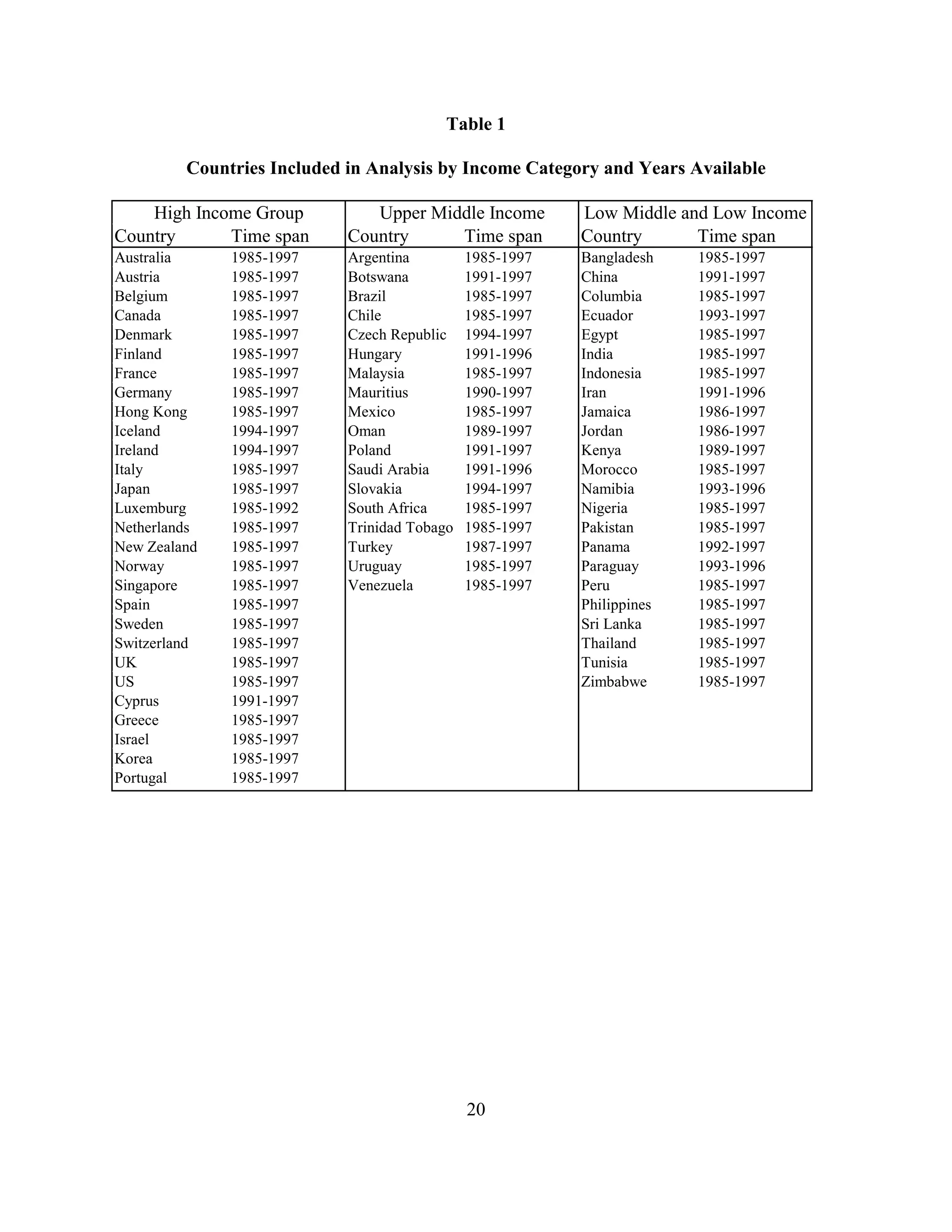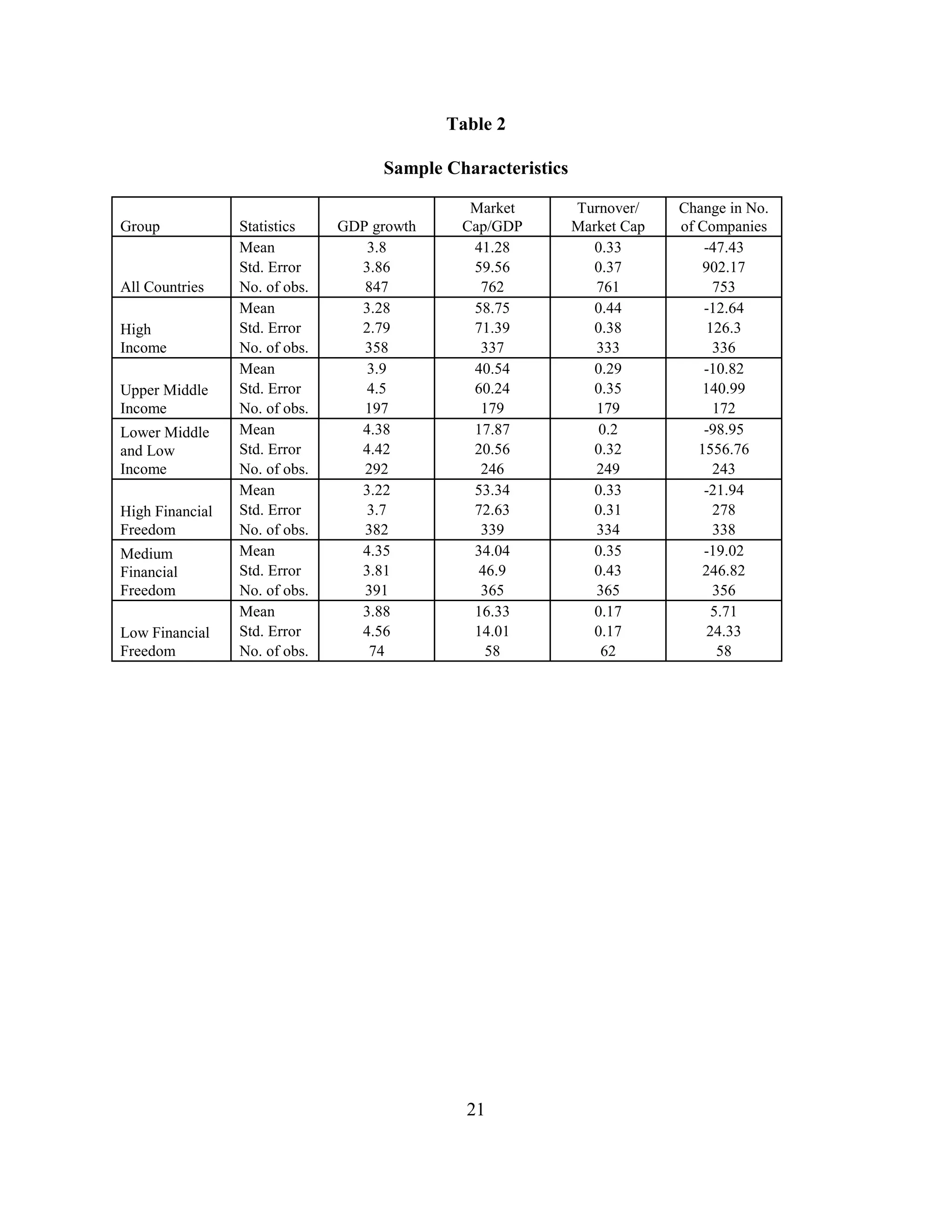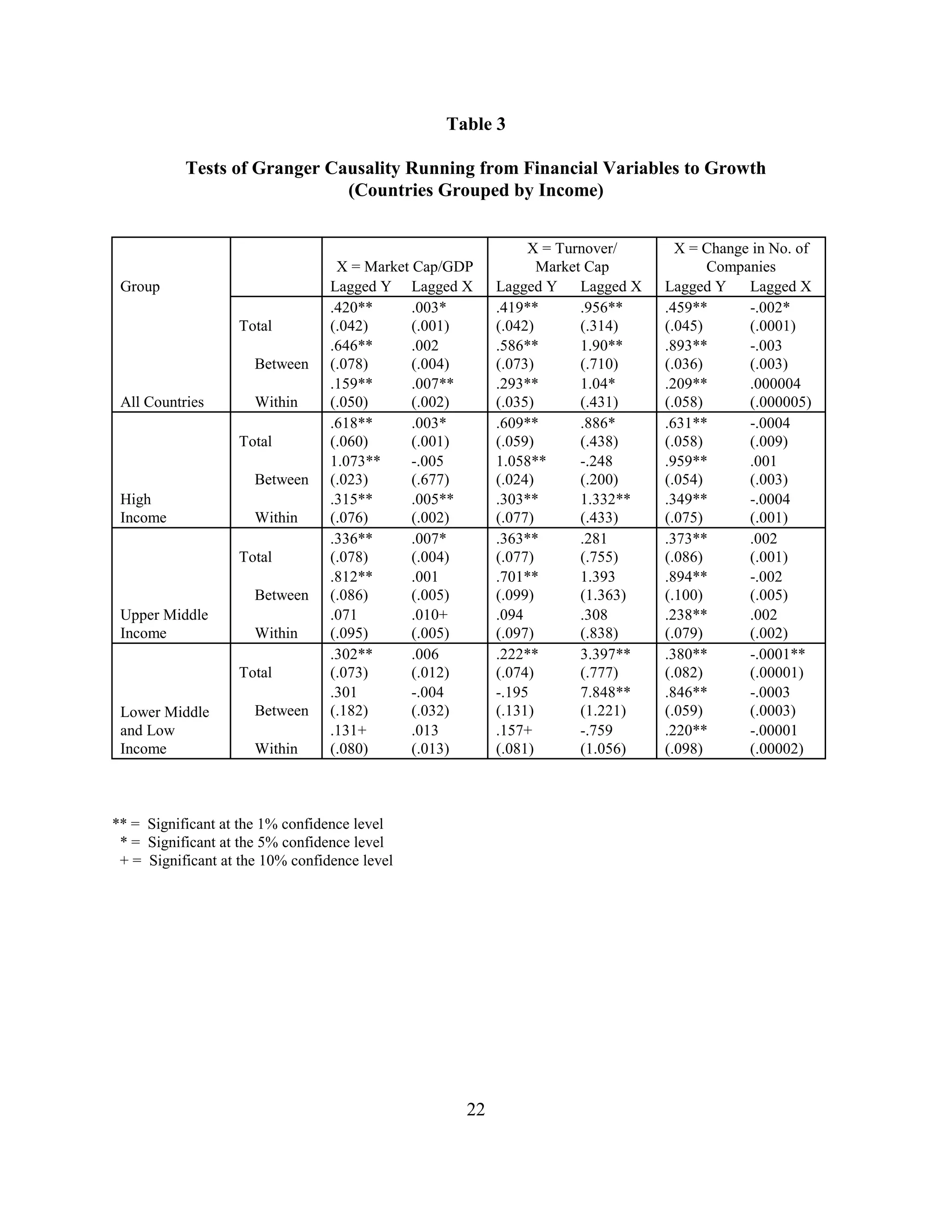This document discusses whether stock markets promote economic growth. It begins by outlining the debate on whether financial development causes growth or vice versa. The authors then:
1) Describe previous empirical studies on the relationship between financial development/stock markets and economic growth that have limitations in establishing causality.
2) Explain their use of Granger causality tests on data from 64 countries over varying time periods to help determine the causal direction of the relationship.
3) Present sample statistics showing differences in growth rates and financial development across income levels and degrees of financial market freedom.
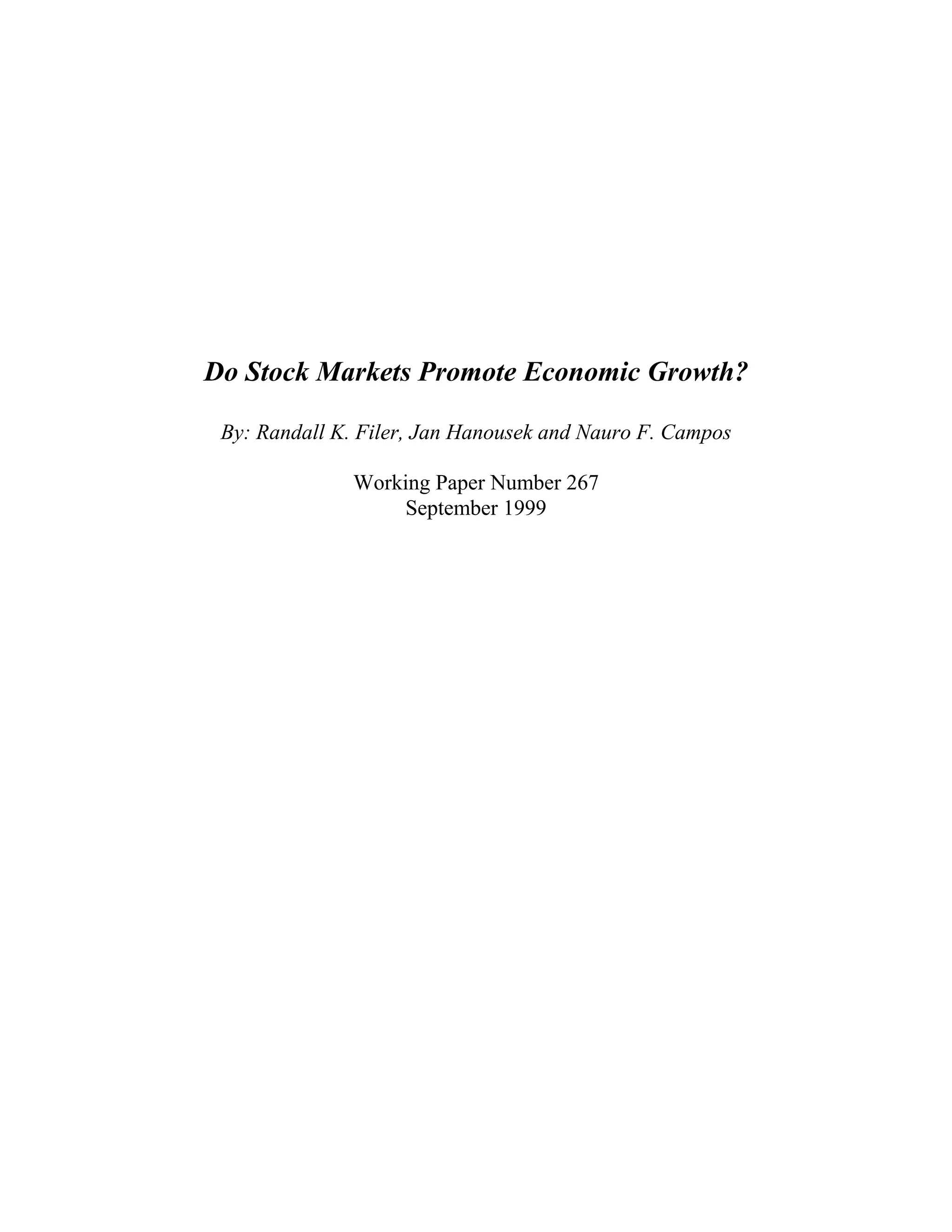
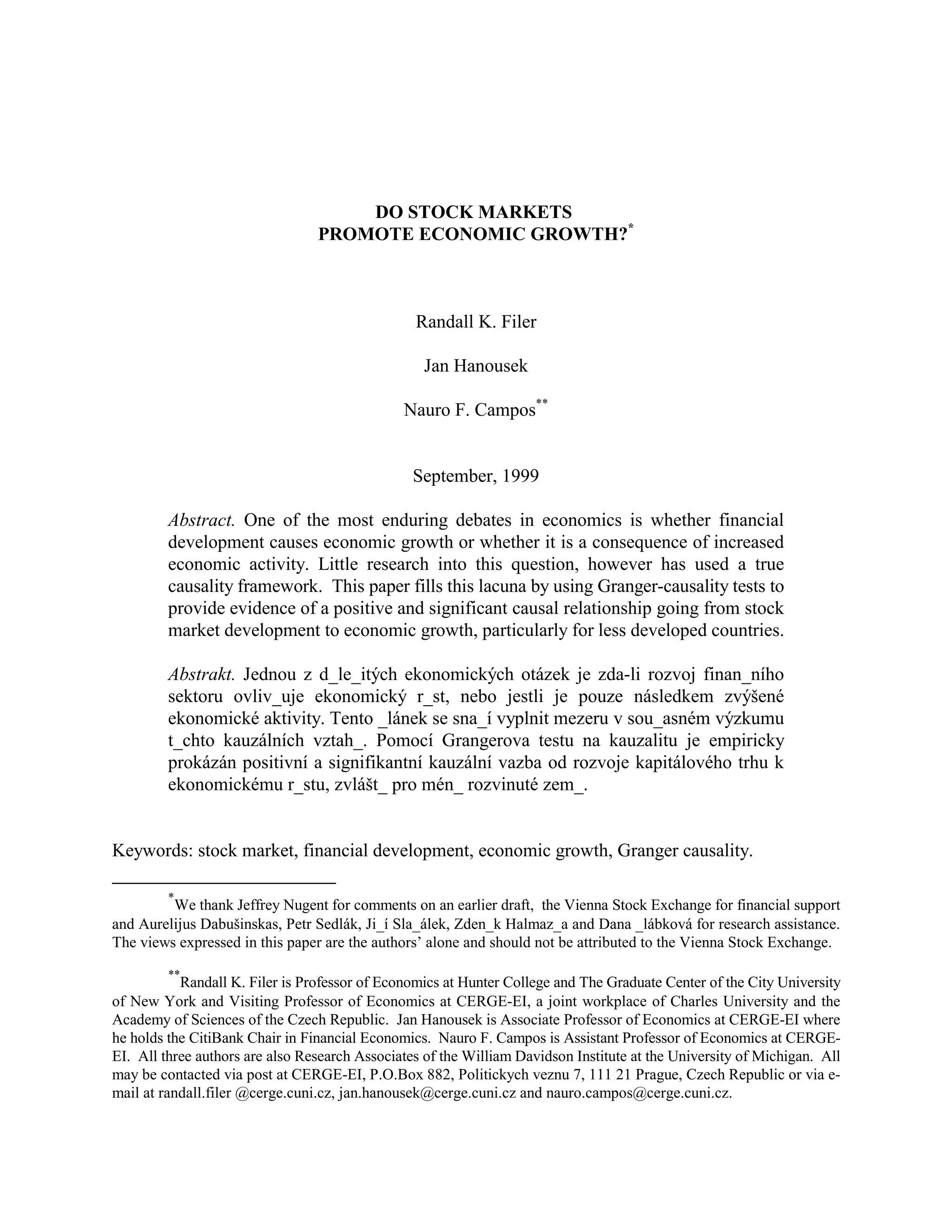
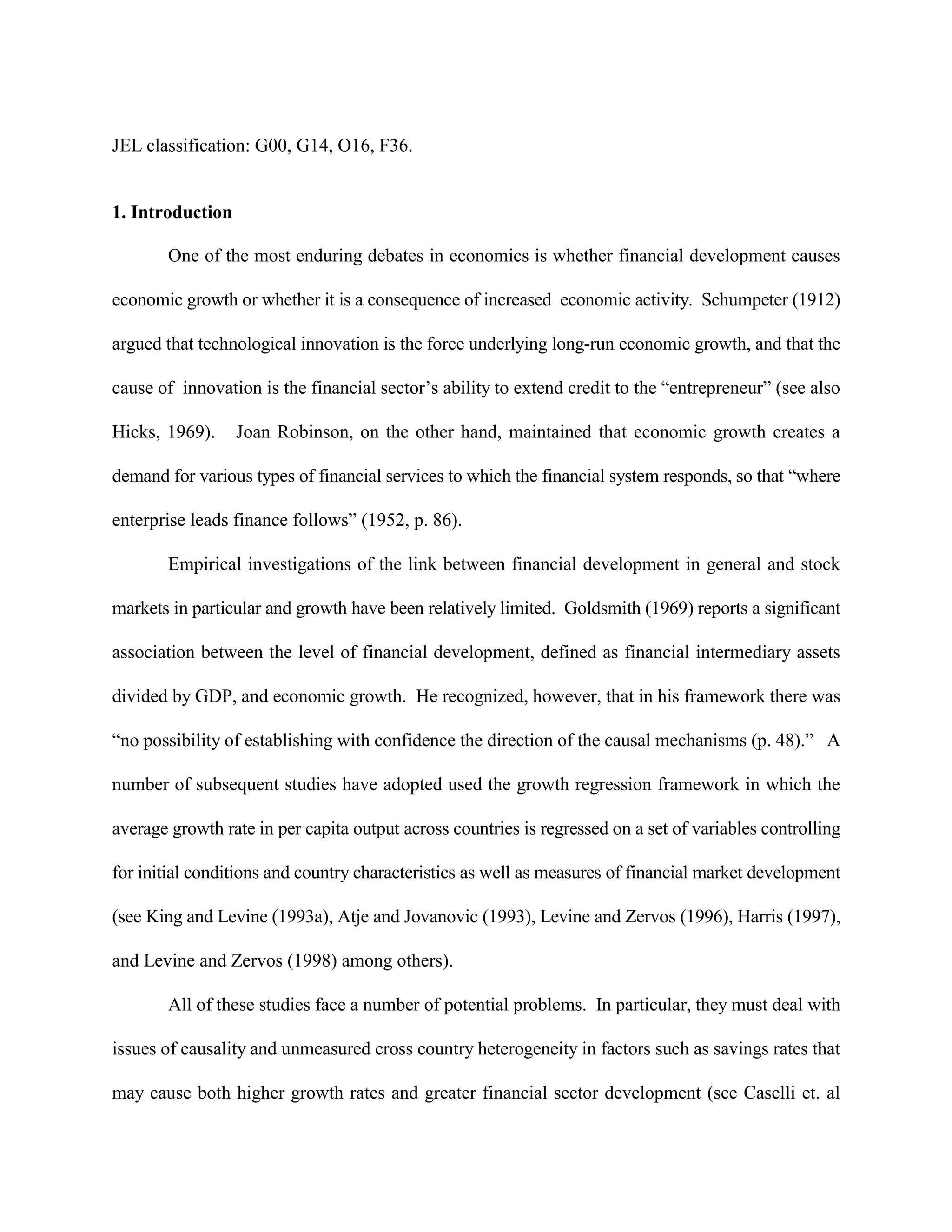
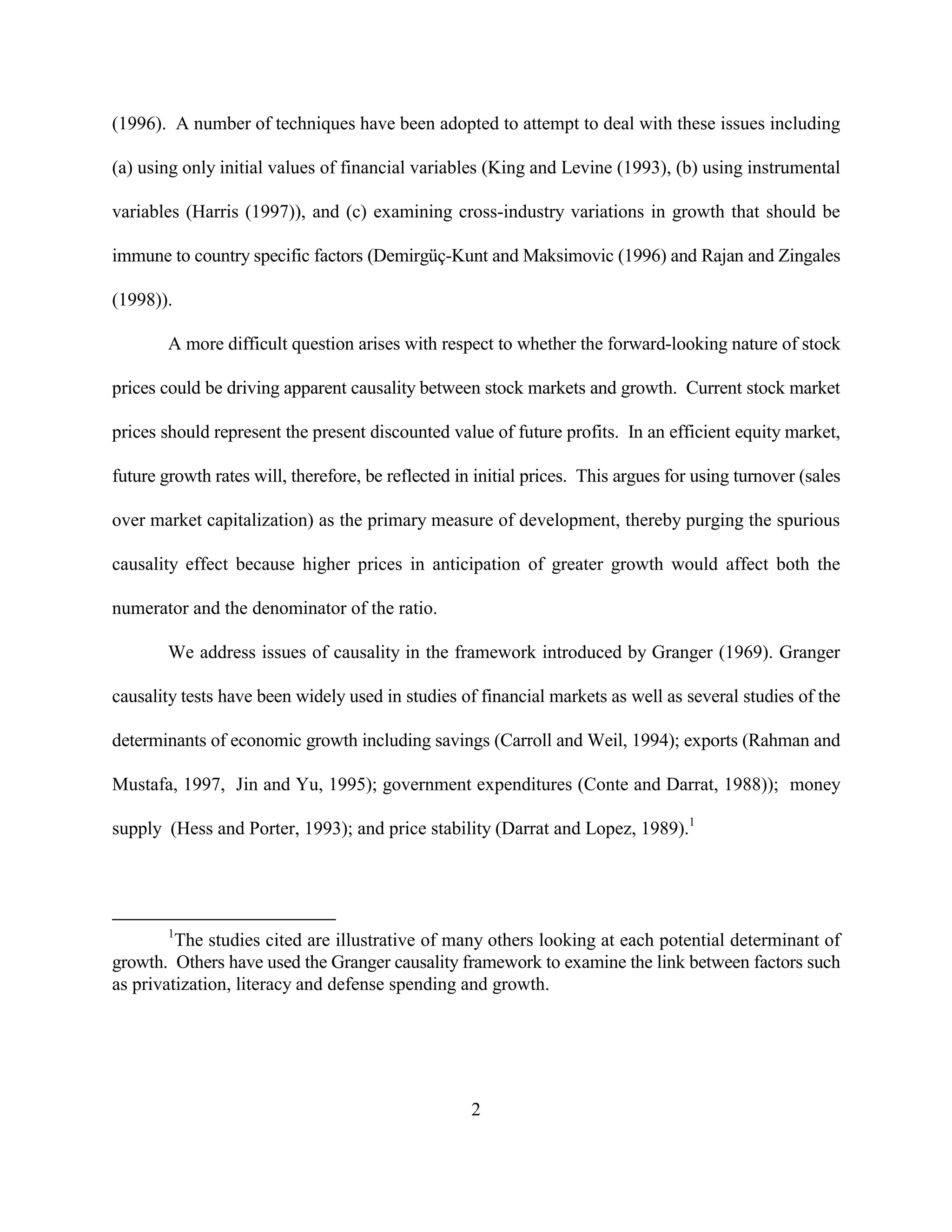
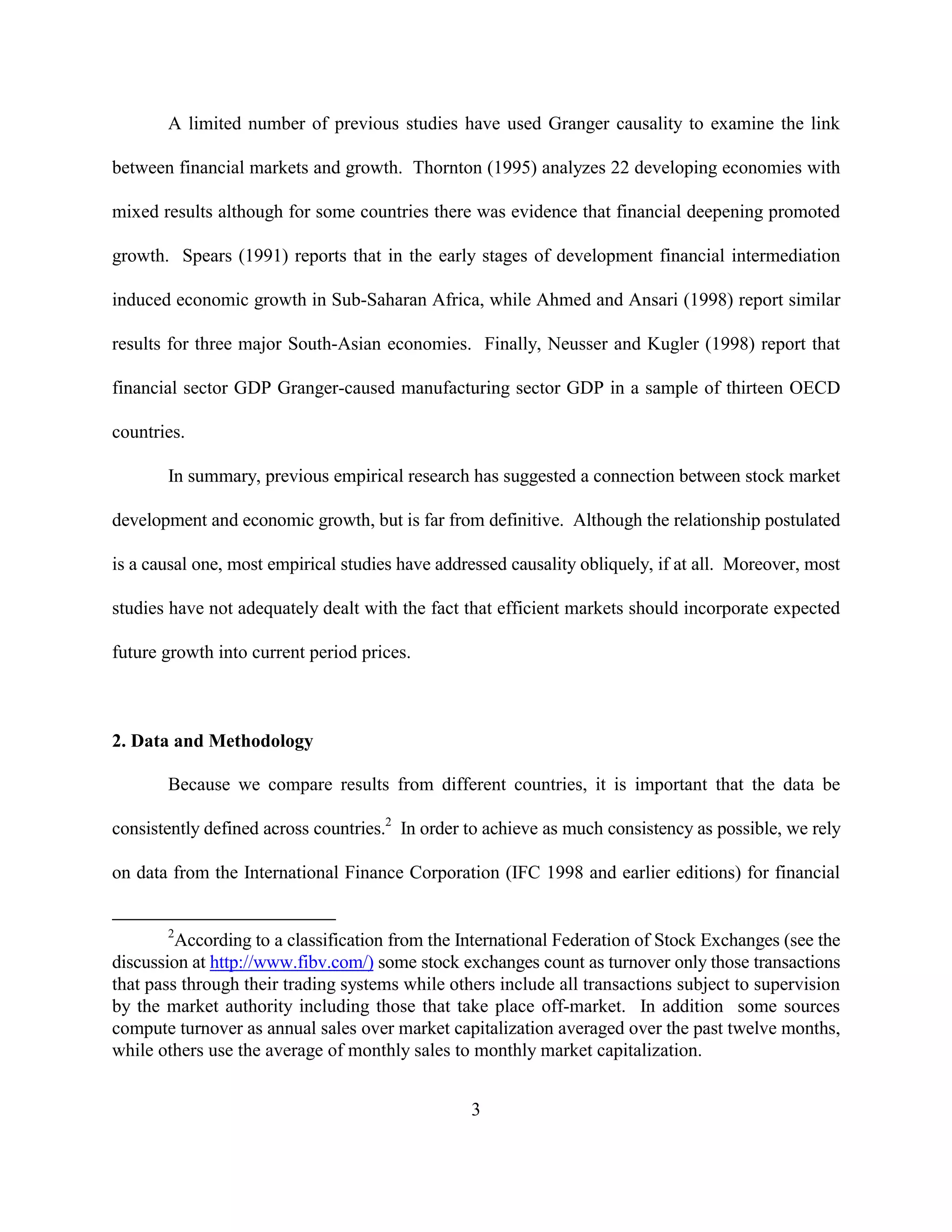
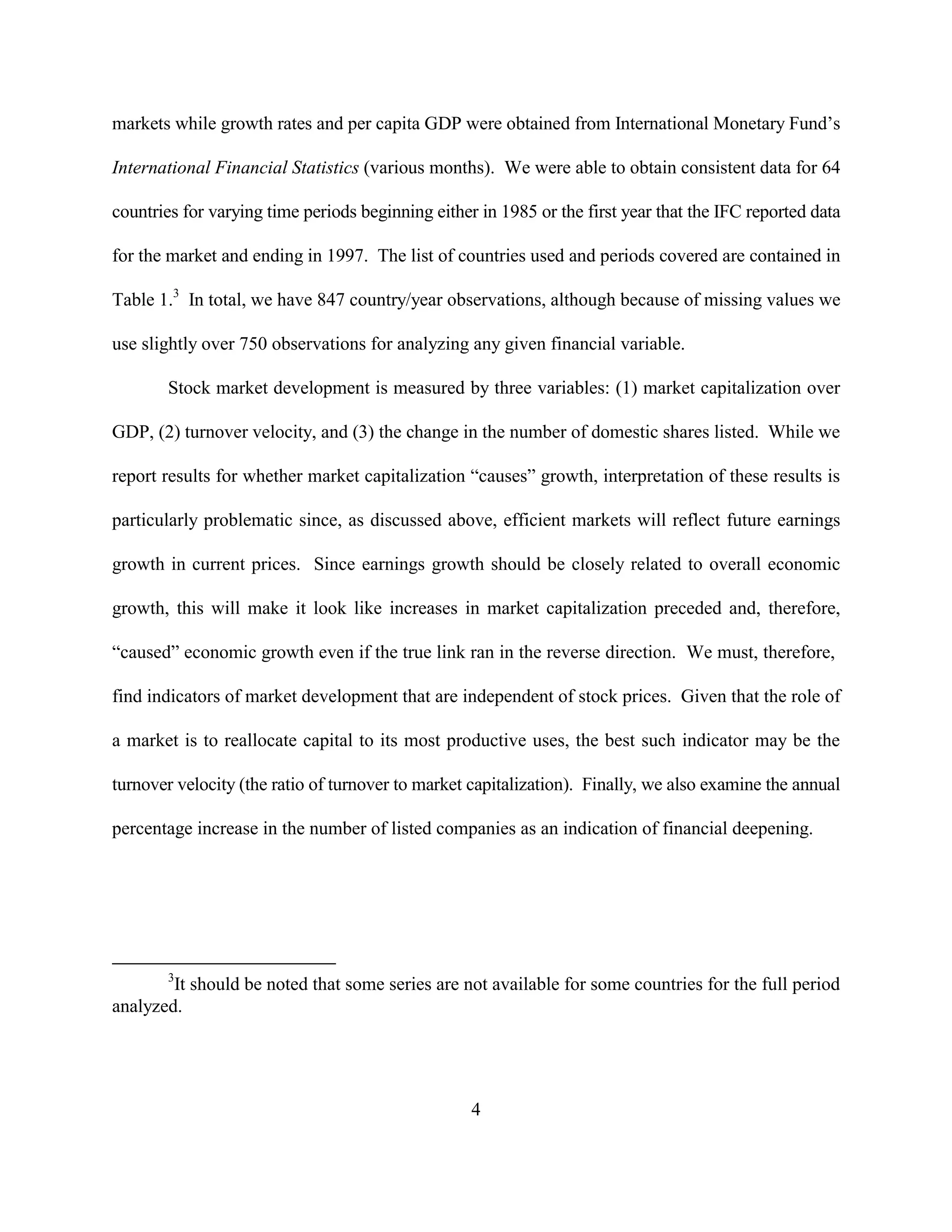
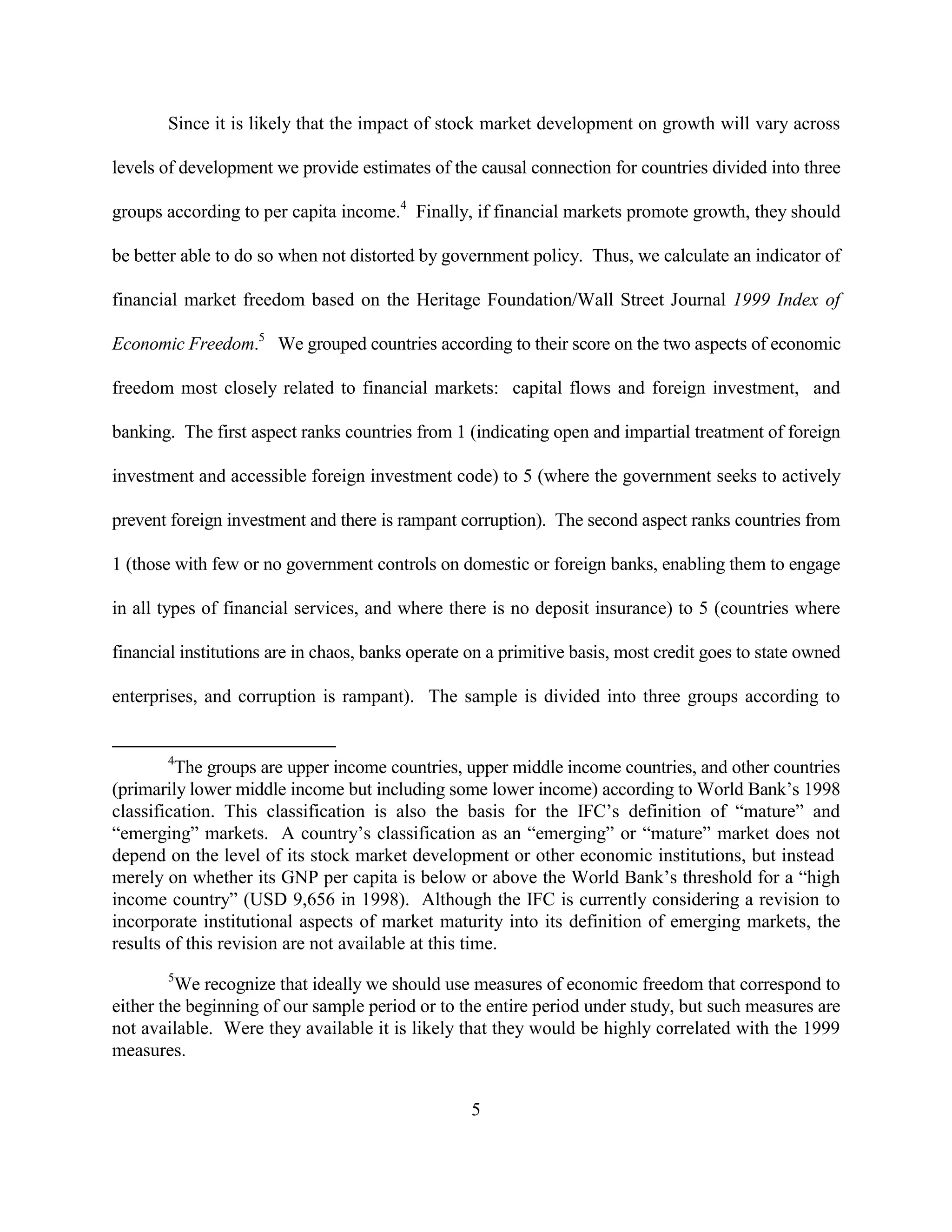

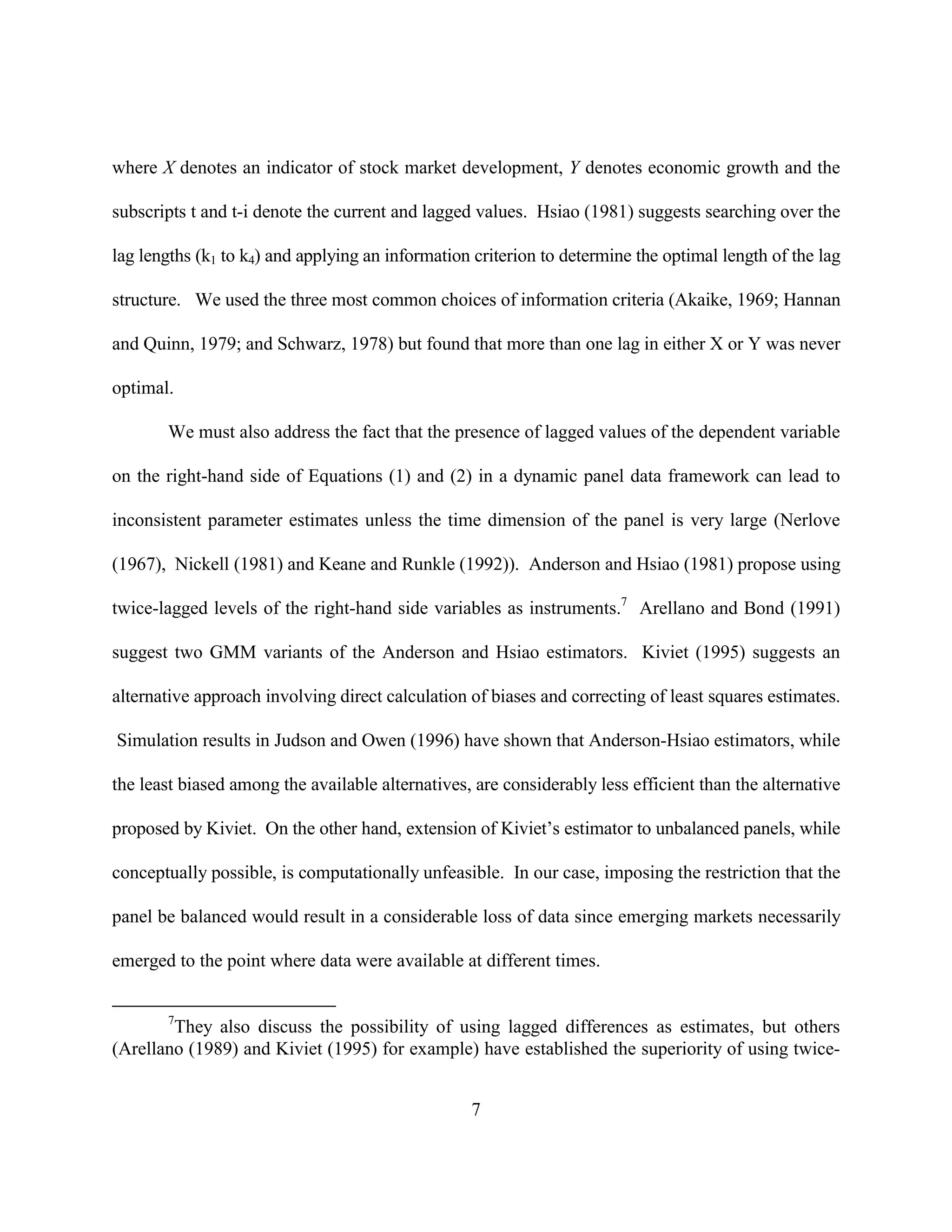
![Given the complications and efficiency loss imposed by attempting to correct for bias in
estimates of the coefficients in Equations (1) and (2) arising from the dynamic panel nature of the
data, we rely on simulations results in Judson and Owen (1999) showing that bias problems are
almost entirely concentrated in the coefficient on the lagged dependent variables, while biases in the
coefficients of independent variables (beta and delta in Equations (1) and (2)) are “relatively small
and cannot be used to distinguish between estimators [including OLS] (p. 13).” Given that we are
not interested in point estimates of these coefficients, that any biases that exist apparently work
against our finding significant causality, and that correction for biases would result in a significant
loss of efficiency that would do more damage to a search for causal relationships than a relative
small coefficient bias, we have elected to ignore bias corrections in the results that follow.
4. Results
lagged levels over lagged differences.
8](https://image.slidesharecdn.com/wp267-110302225511-phpapp01/75/Wp267-10-2048.jpg)
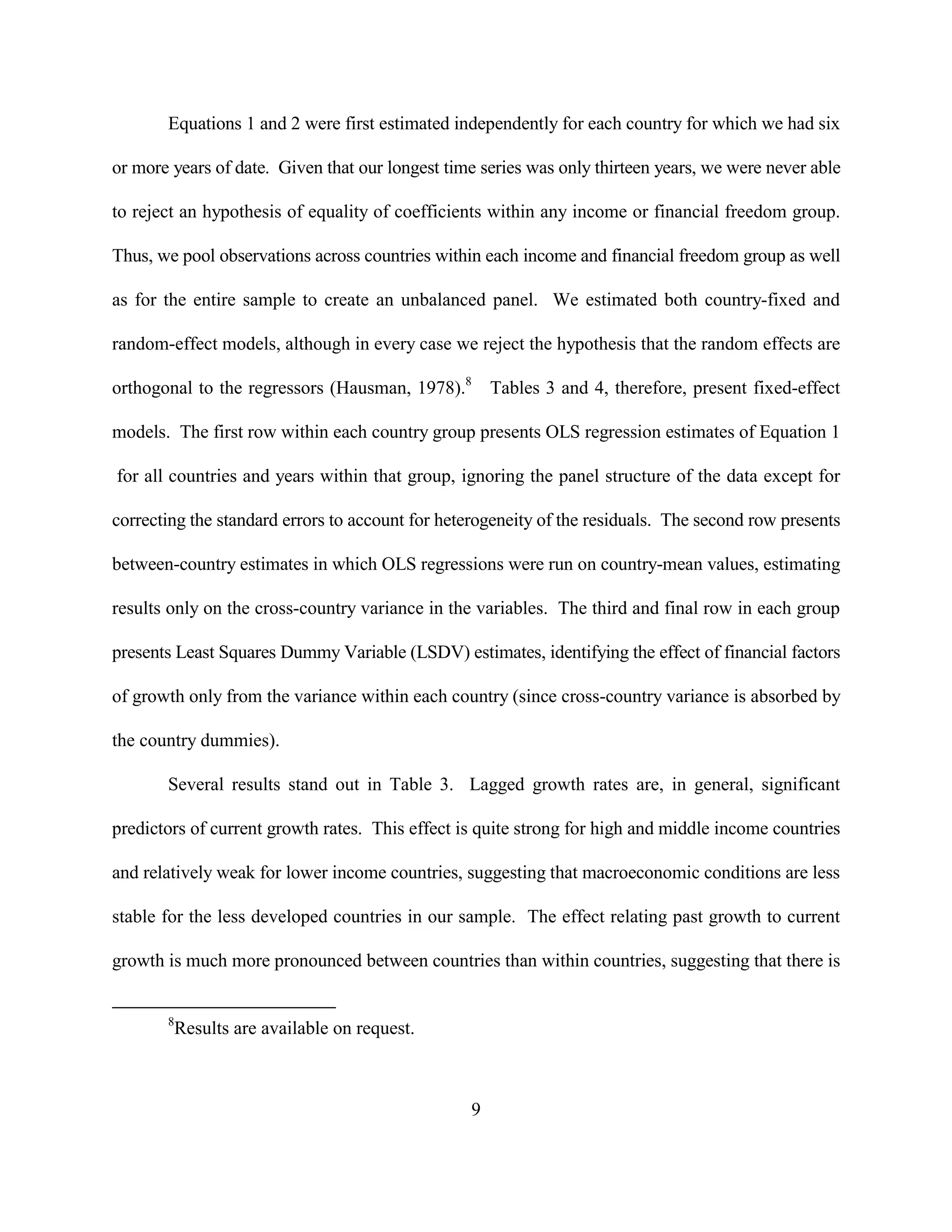
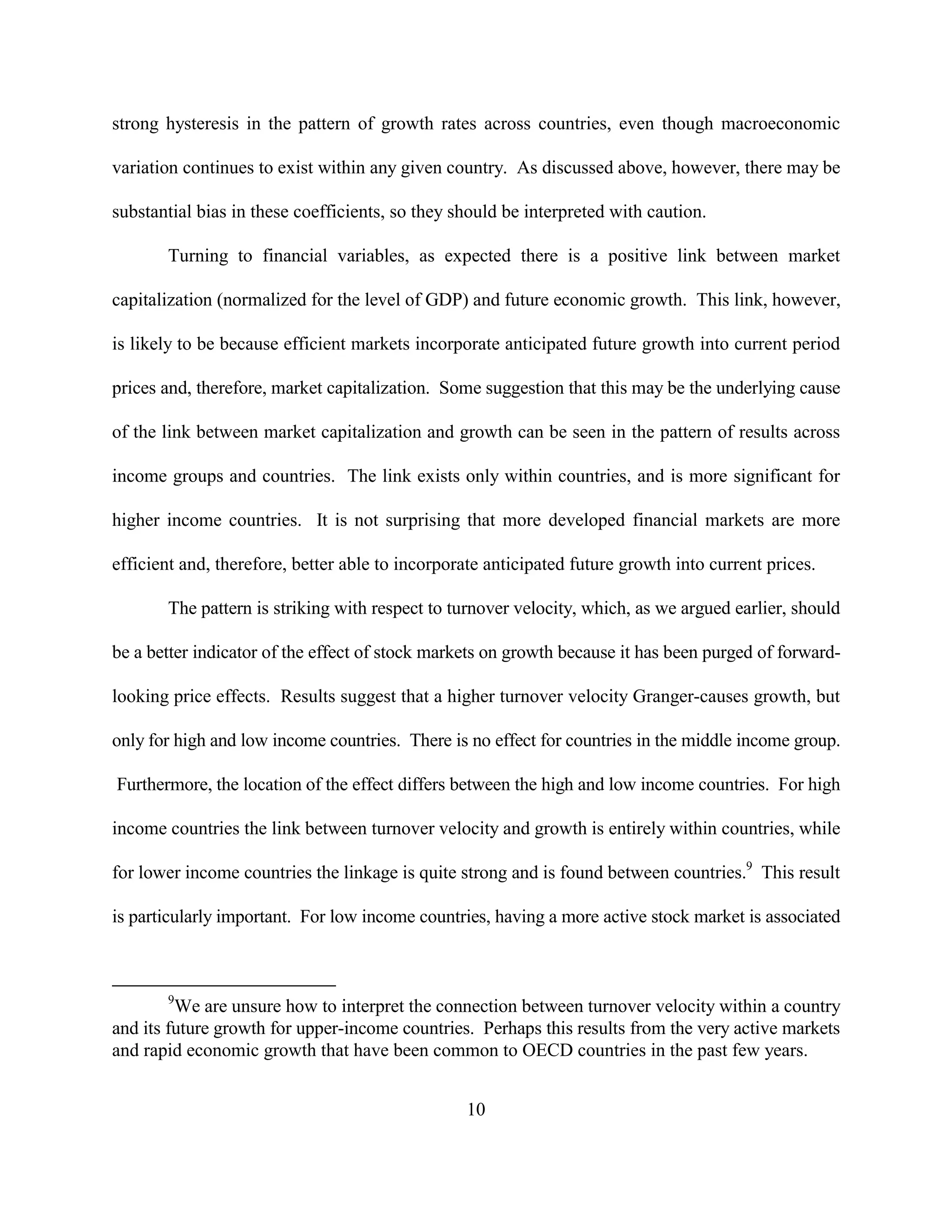
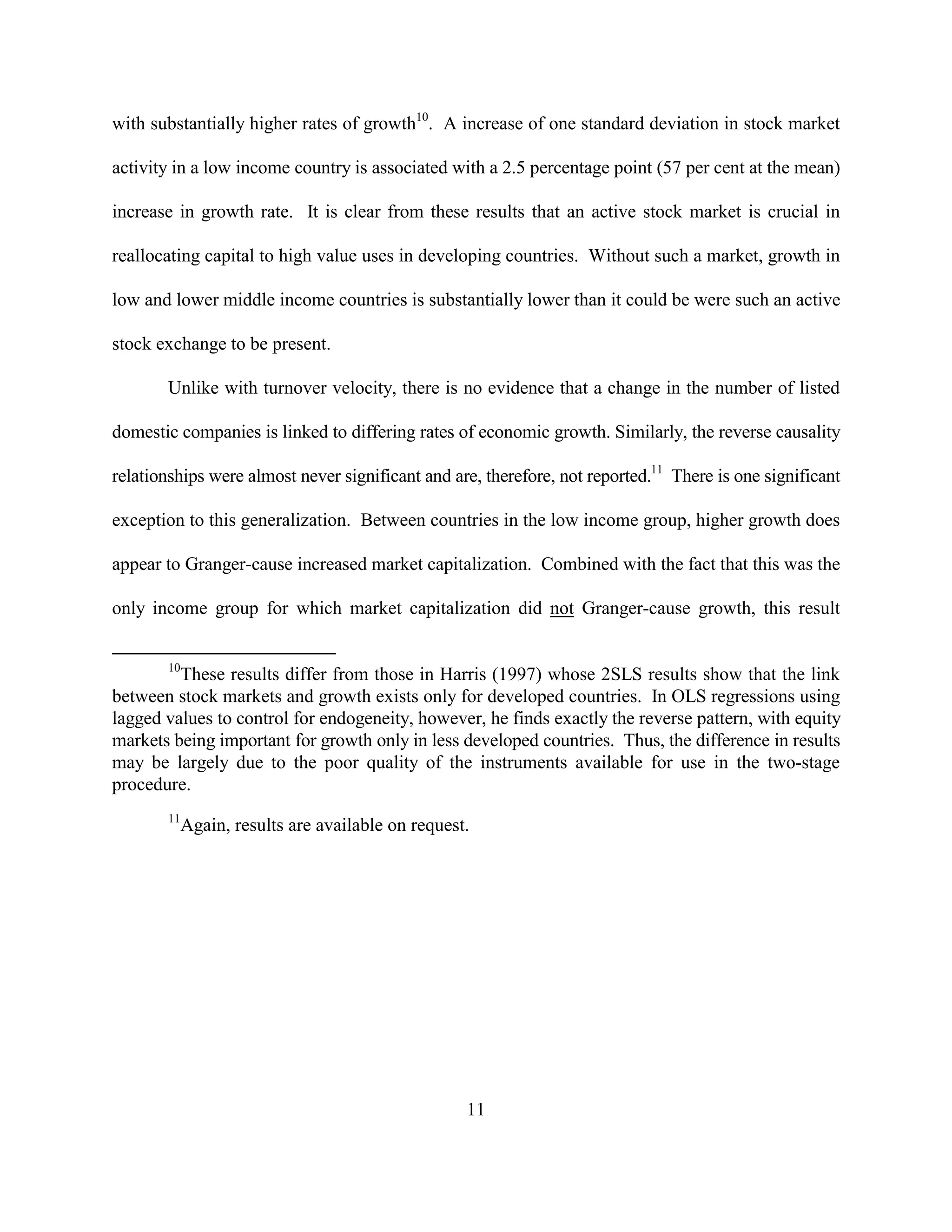
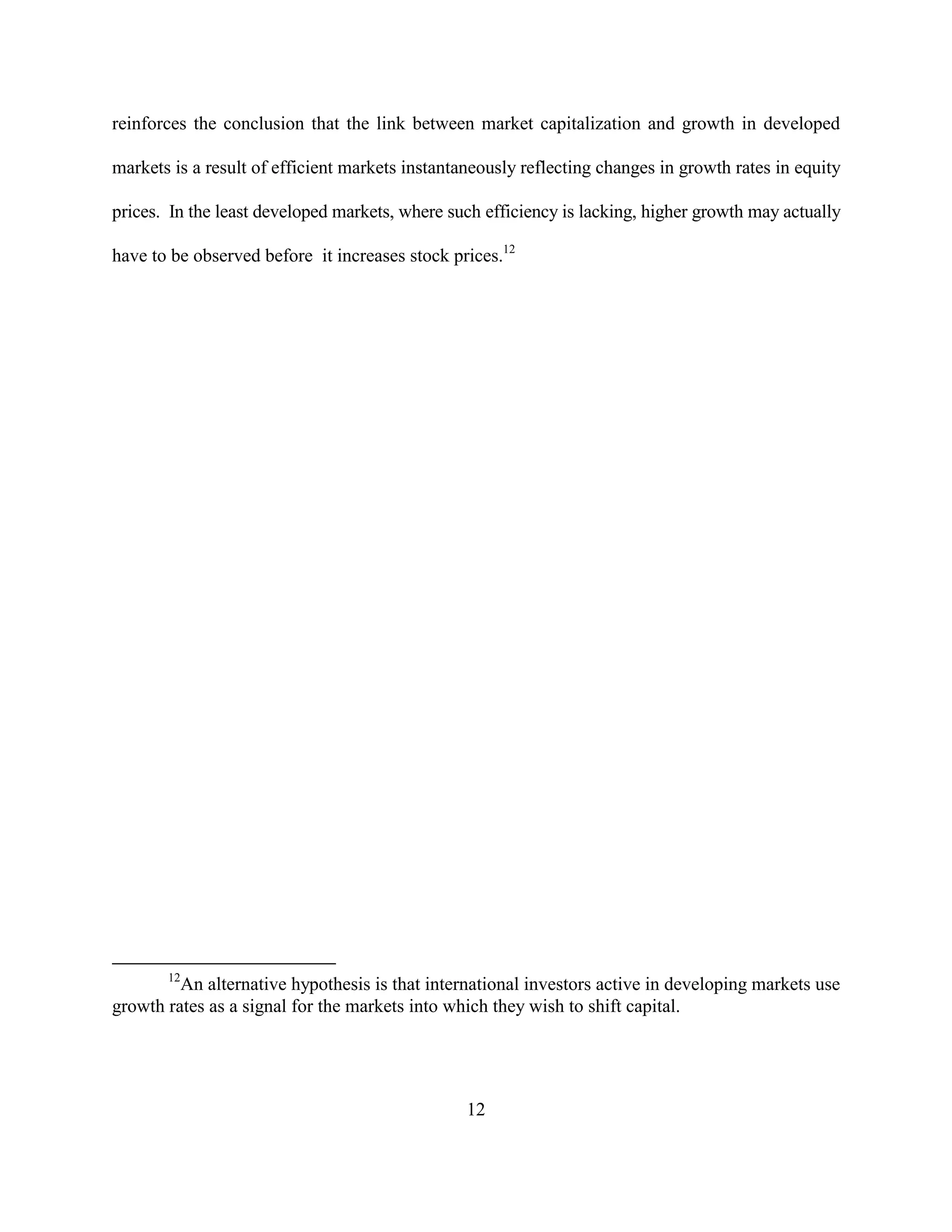
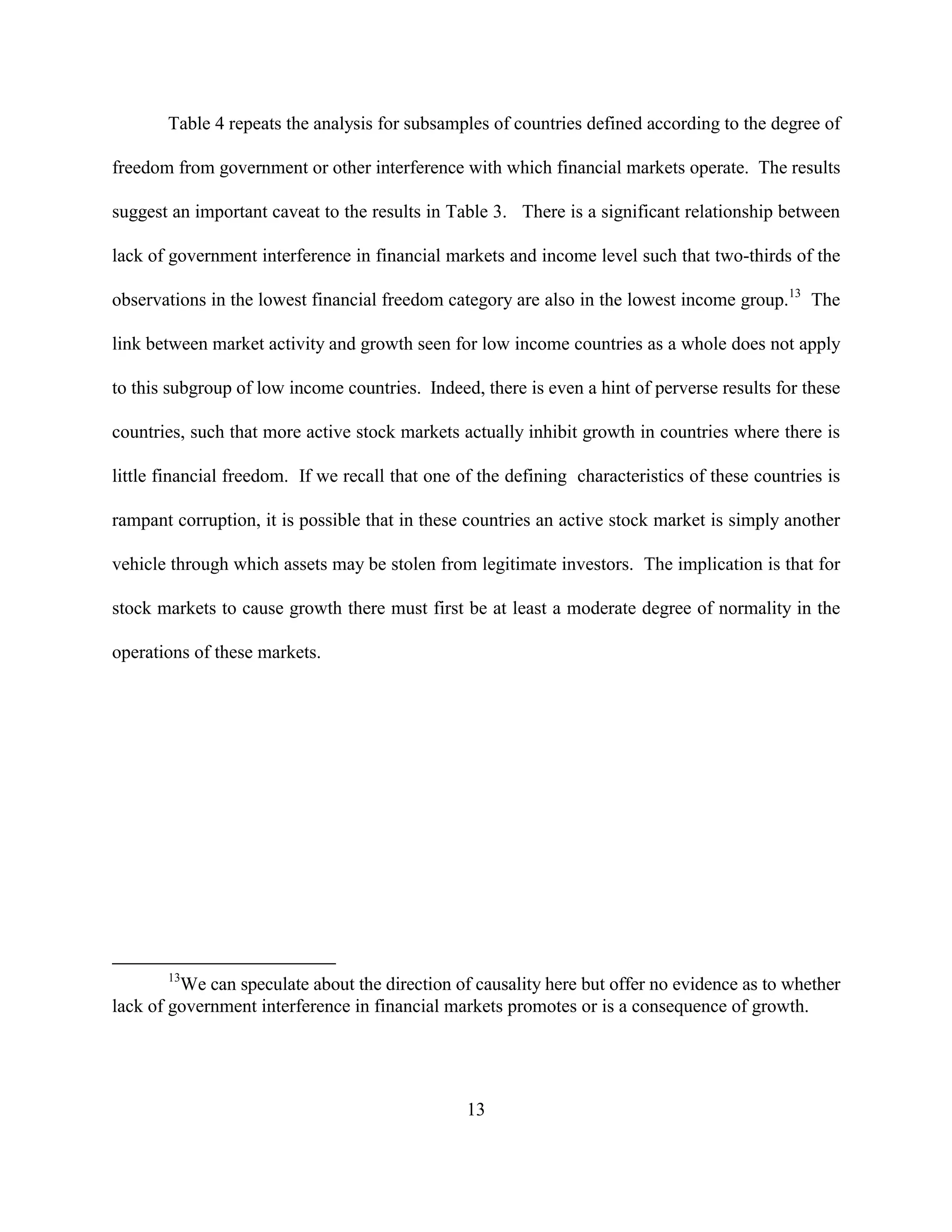


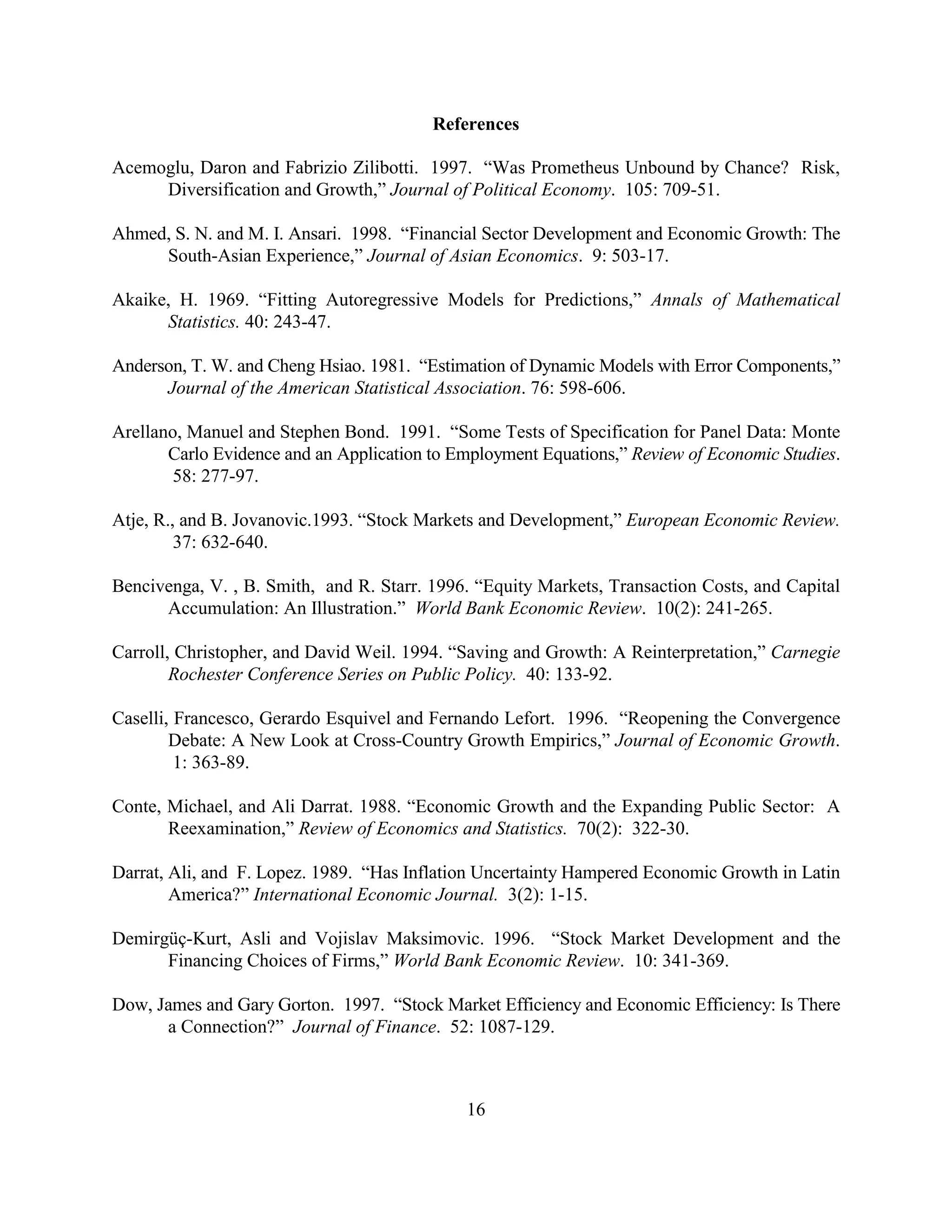
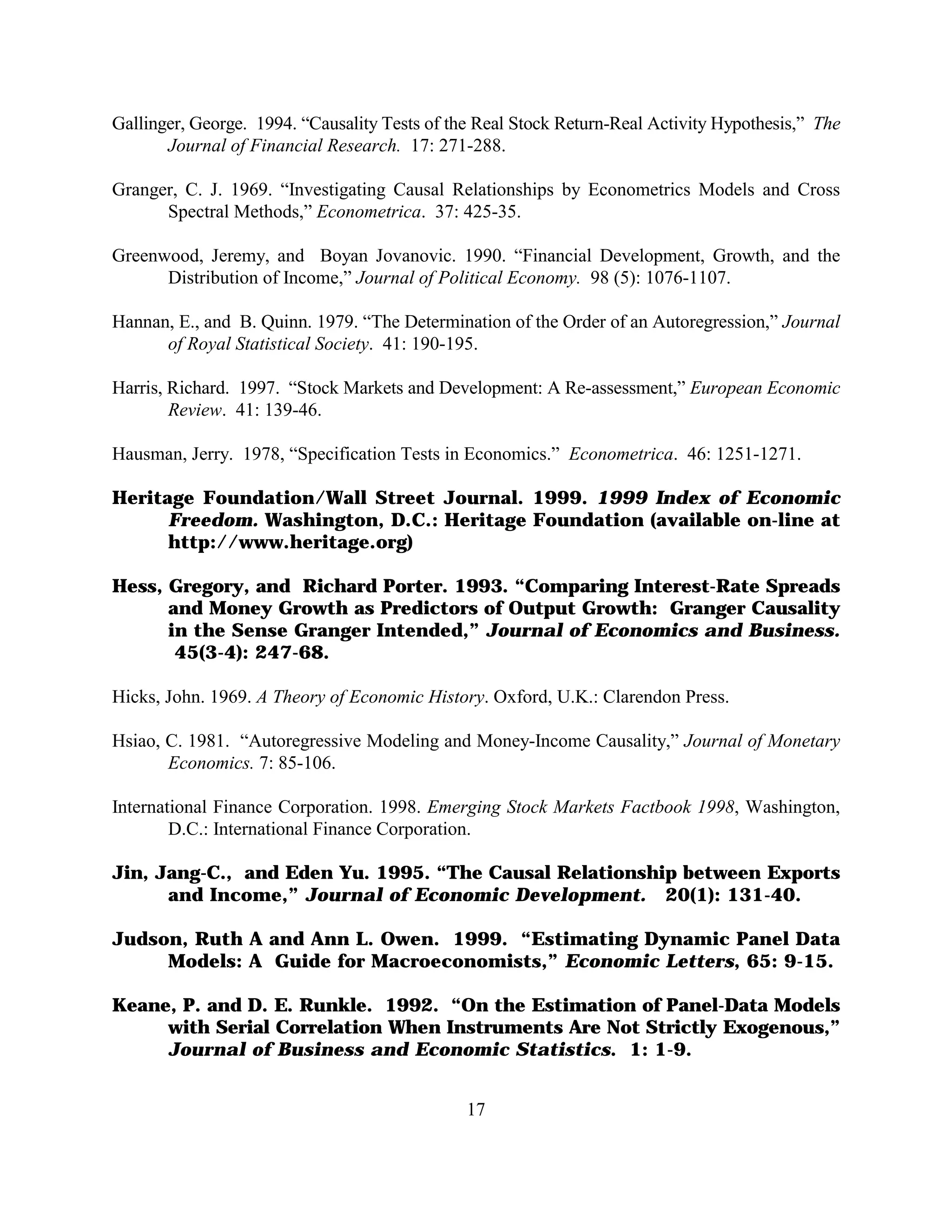
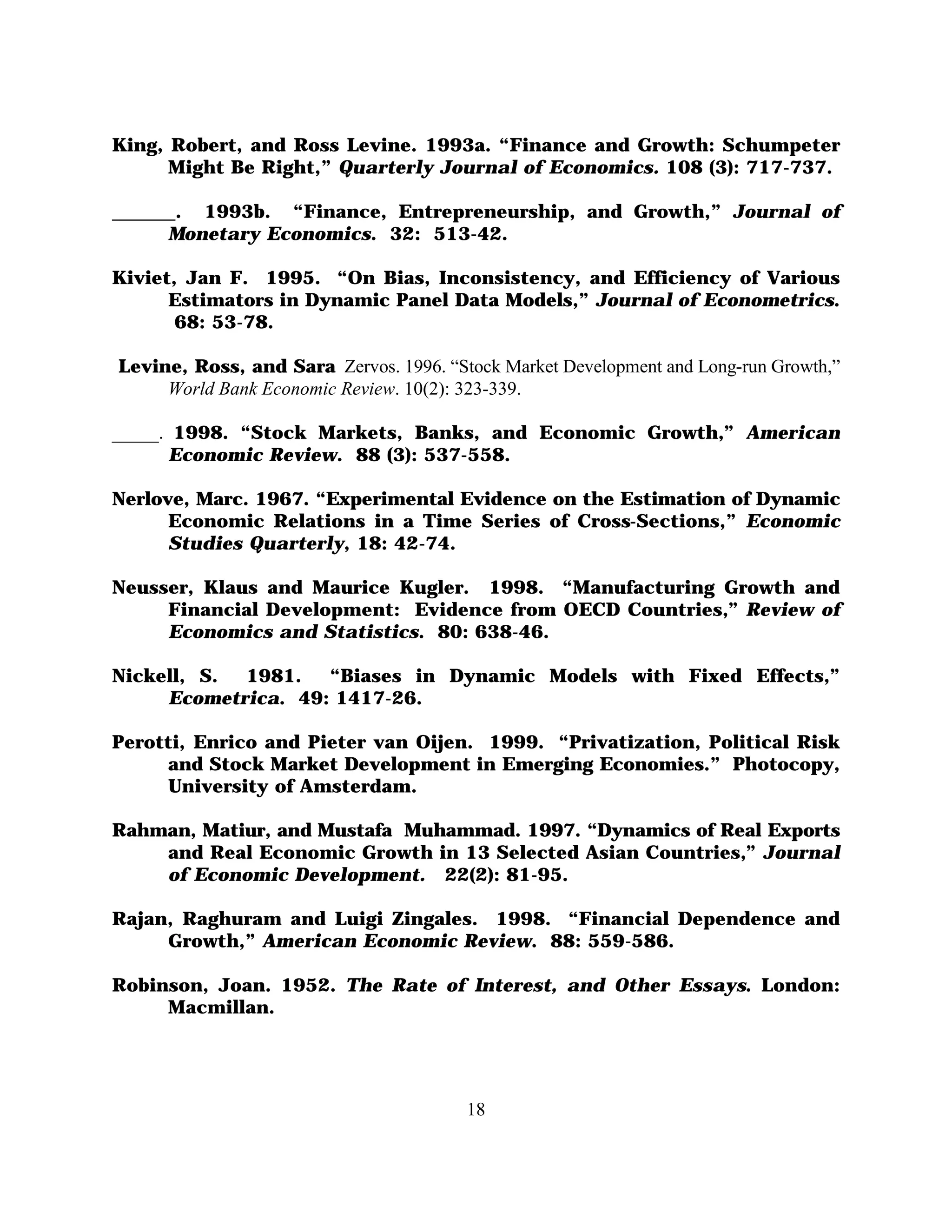
![Schumpeter, J. 1912. Theorie der Wirtschaftlichen Entwicklung [The
Theory of Economic Development]. Leipzig: Dunker & Humblot
[Cambridge, M.A.: Harvard University Press, 1934. Translated by
Redvers Opie].
Schwarz, G. 1978. “Estimating the Dimension of a Model," Annals of
Statistics. 6: 461-464.
Spears, Annie. 1991. “Financial Development and Economic Growth -
Causality Tests,” Atlantic Economic Journal. 19: 66.
Thornton, John. 1995. “Financial Deepening and Economic Growth in
Developing Countries,” Economia Internazionale. 48(3): 423-30.
WIDER (World Institute for Development Economics Research). 1990
Foreign Portfolio Investment in Emerging Equity Markets. Helsinki:
WIDER.
World Bank. 1999. World Development Report 1998/99: Knowledge for
Development. Washington, D.C.: Oxford University Press.
19](https://image.slidesharecdn.com/wp267-110302225511-phpapp01/75/Wp267-21-2048.jpg)
